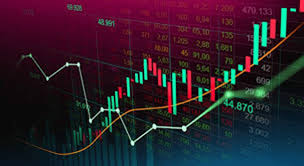
In today’s fast-paced financial markets, forex software trading Trading Uganda has become synonymous with innovation and efficiency. For traders looking to navigate the complexities of forex markets, software trading tools have revolutionized the way they approach the market. With the right software, traders can automate their strategies, analyze market trends, and execute trades with precision. This article delves into the world of forex software trading, exploring the various tools available, their benefits, and how they can enhance trading performance.
What is Forex Software Trading?
Forex software trading refers to the use of automated systems or applications designed to facilitate trading in the foreign exchange market. These tools help traders execute transactions, analyze market conditions, and manage their trading accounts effectively. The main components of forex trading software include trading platforms, charting tools, analytical software, and automated trading systems.
The Evolution of Forex Trading Software
The evolution of forex trading software has paralleled technological advancements in the financial industry. In the early days of forex trading, transactions were conducted manually via telephone or in-person dealings at banks. With the advent of the internet, trading transitioned to online platforms, drastically increasing accessibility and efficiency. Today, sophisticated trading software provides traders with real-time data, advanced technical analysis, and the ability to execute trades at lightning speed.
Types of Forex Trading Software
There are several types of forex trading software that cater to different trading styles and preferences. Here are some of the most common types:
1. Trading Platforms
Trading platforms are the foundation of forex software trading. They provide the interface for executing trades and analyzing market conditions. Popular platforms like MetaTrader 4 (MT4) and MetaTrader 5 (MT5) offer a range of features, including customizable charts, technical indicators, and automated trading capabilities.
2. Analysis Tools
Analysis tools help traders identify trends and make informed decisions. These tools can include technical analysis software, economic calendars, and news aggregators. By leveraging these tools, traders can gain insights into market movements and adjust their strategies accordingly.
3. Automated Trading Systems
Automated trading systems, also known as algorithmic trading systems, allow traders to set specific criteria for executing trades. Once these criteria are met, the software automatically places trades on behalf of the trader. This reduces emotional bias and enhances the speed and efficiency of trading.
Advantages of Using Forex Trading Software
The integration of software in forex trading offers numerous advantages:
1. Increased Efficiency
Forex trading software can analyze vast amounts of data in real-time, allowing traders to make quick decisions based on market conditions. This efficiency is crucial in a market where every second counts.
2. Enhanced Accuracy
Automated trading systems eliminate human errors associated with manual trading. By following predetermined rules and algorithms, these systems ensure that trades are executed with precision.
3. 24/5 Trading
The forex market operates 24 hours a day, five days a week. With automated trading systems, traders can take advantage of market opportunities even when they are not actively monitoring the market.

4. Backtesting Capabilities
Software trading allows traders to backtest their strategies using historical data. This capability helps traders refine their approach and identify potential weaknesses in their strategies before deploying them in live trading environments.
Choosing the Right Forex Trading Software
With numerous forex trading software options available, selecting the right one can be daunting. Here are some factors to consider:
1. User-Friendly Interface
An intuitive and user-friendly interface is essential, especially for beginners. The software should be easy to navigate, with clear menus and functionalities.
2. Range of Features
Evaluate the range of features offered by the software. Look for tools that provide technical analysis, risk management options, and compatibility with various trading strategies.
3. Customer Support
Reliable customer support is crucial for resolving any issues that may arise during trading. Opt for software providers that offer responsive and knowledgeable customer service.
4. Security Measures
The security of your trading data and funds is paramount. Choose software that uses robust security protocols, such as encryption and two-factor authentication.
Best Practices for Using Forex Trading Software
To maximize the effectiveness of forex trading software, traders should adhere to the following best practices:
1. Stay Informed
Even with automated trading systems, traders should stay informed about global economic events and market trends. Understanding the factors that influence currency prices can enhance trading decisions.
2. Regularly Update Strategies
Market conditions are constantly changing. Regularly review and update your trading strategies to ensure they remain effective under current market conditions.
3. Manage Risk Wisely
Utilize the risk management tools provided by the software. Set stop-loss orders and take-profit levels to protect your investments and maximize potential gains.
4. Practice on Demo Accounts
Before committing real funds, practice your trading strategies on demo accounts. This allows you to familiarize yourself with the software and refine your skills without risk.
Conclusion
Forex software trading has transformed the landscape of currency trading, providing traders with powerful tools to optimize their strategies and improve their performance. By leveraging the right software, traders can navigate the forex market with greater efficiency and accuracy. However, it is essential to choose the right tools and practices to capitalize on these advantages effectively. As the trading environment continues to evolve, staying informed and adaptable will remain critical to success in the world of forex trading.
